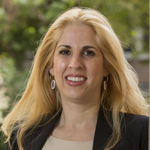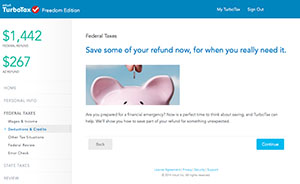Last year, almost 900,000 low- and moderate-income tax filers participated in a unique tax preparation savings intervention program, depositing approximately $5.9 million more into savings accounts than they would have without the intervention.

As the 2014 tax season opens, the Refund to Savings (R2S) initiative continues with adjustments designed to better understand consumer savings behavior and help more Americans build savings.
“The intervention is promising,” said Michal Grinstein-Weiss, PhD, associate director of Washington University in St. Louis’ Center for Social Development (CSD) and co-lead researcher with Dan Ariely, PhD, the James B. Duke Professor of Behavioral Economics at Duke University.
“Our goal was to help stem the tide of increasing financial insecurity among American families. This is a step in the right direction – and we will keep pushing to learn more,” Grinstein-Weiss said.
Refund to Savings, the largest savings experiment – in terms of sample size – ever conducted in the United States, is reaching taxpayers through rigorously designed and scalable tax-refund savings interventions when filing taxes electronically. The initiative is a collaboration between university researchers and Intuit Inc., the maker of TurboTax tax preparation software.
“The Refund to Savings initiative is just one way Intuit is helping taxpayers improve their financial lives,” said Phillip Poirier, vice president at Intuit. “Tax time is an ideal time for individuals and families to look at their finances and to take steps to get their financial house in order.”
In 2011, researchers began developing surveys and randomized control trials to investigate low-income tax filers’ behaviors and preferences. In 2012, the program was launched nationally, and in 2013 it was expanded.

To overcome the natural tendency to delay saving or not save at all, researchers leveraged a key “moment of truth” – the instance when taxpayers learn of their refund amount but don’t yet have the money in their hands.
In 2013, users were shown one of several randomly selected motivational messages designed to prompt taxpayers to put a portion of their refund into a savings account or receive their refund in the form of savings bonds. These motivational prompts included saving for emergencies, their families or their future.
Each motivational message also suggested a different savings-to-spending ratio. The suggested savings amounts were critical because research indicates that people save more when a higher amount is suggested. The saved portion was then automatically deposited to an existing savings account (or savings bonds), similar to the way refunds were already directed to taxpayers’ checking accounts.
Immediately following tax filing and again six months later, researchers followed up with voluntary surveys to learn what motivated taxpayer decisions in choosing a savings-to-spending ratio, and whether their decision to save had an impact on household finances.
The 2013 R2S Household Financial Survey had a high number of responses – with more than 20,000 individuals responding to the baseline survey and more than 8,000 taking part in the follow-up survey – making it one of the largest detailed surveys on the financial lives of low-income households.
“We are learning a lot about many aspects of households’ financial situations from the Household Financial Surveys,” said Krista Comer, CSD program manager, who leads the research project. “The data collected provide an informative look at financial challenges and opportunities for families.”
Researchers used that information to build on last year’s intervention and move the program forward for 2014. A new saving-promotion experiment will be incorporated into this year’s TurboTax Freedom Edition available through the IRS Free File program, and researchers again will follow up with surveys. Over the course of the filing season, users will see multiple messages about savings at various times throughout the filing process to better prepare or “prime” filers to take advantage of the saving opportunity.
“The vast majority of Americans withhold too much money and get a relatively substantial tax refund,” Ariely said. “Some people may view that as a mistake. But another way to view it is that people are getting a benefit in terms of the increased ability to save money. In Refund to Savings, we take this approach, and we ask whether we could help people during that time not only get a refund but use it for good purposes.”
Each year, researchers hope to gain more information and insight into how and why people save, always with the goal of helping people build financial security.
As the program moves forward, the R2S research team will prepare and issue publications, briefings and presentations to share the findings with a broad audience, ranging from policy makers to academics to practitioners.
“Our hope is to use this initiative to generate rigorous evidence to inform policy changes aimed at increasing financial security,” Grinstein-Weiss said.